We are mainly studying the chain forming diatom Skeletonema marinoi and are investigating genomic adaptations in natural systems that have evolved in response to environmental changes. This species forms resting cells that can remain viable in the sediment for at least 100 years, and we can revive these cells to analyse phenomic and genomic differences over time.
As sequencing of diatom cultures will inevitably generate a lot of bacterial data, we use this and other sources of data to study the interactions between S. marinoi and its microbiome, and the influence each species has on the diatom-bacteria holobiont.
In collaboration with an international consortium of stakeholders, end-users and researchers we are also developing molecular and bioinformatic methods for monitoring biodiversity using eDNA technology.
Adaptation to warming in natural phytoplankton populations
Global warming imposes rapid environmental shifts on all species and it is therefore important to investigate the capacity of biological systems to adapt to changed conditions. In this project we study adaptation of phytoplankton populations revived from sediment cores from an area affected by cooling water discharges from a nuclear power plant. Resting stages of the diatom Skeletonema marinoi, from before and after the thermal perturbation began, have be germinated. Each strain has then been phenotyped in a lab-experiment at 18°C (low) and 23°C (high temperature conditions), to recreate the temperature regimes of pre- and post-power plant summer conditions. We have found that under high temperature conditions, post-power plant populations have higher fitness than pre-power plant populations and vice versa, indicating that adaptation to warmer water conditions has occurred. We are now analysing whole genome sequence data from these adapted strains to identify genomic changes that can explain the differences in phenotype. The sequence reads are beeing aligned to the reference genome of S. marinoi and the degree of polymorphism and large-scale structural rearrangements are beeing identified. By comparing the frequency of warm water genotypes in pre- versus post-power plant populations we can determine if the changes is due to selection on standing genetic variation or if the changes are due to a new mutation favored by selection under thermal stress.
Funding: Formas 2017 - 00466
Survivors of the Sea: How diatom resting stages remain alive 100 years embedded in sediment
Diatoms are important primary producers and responsible for 20% of the global CO2 fixation. Resting stages produced during adverse conditions in the water column serve to anchor populations in their native areas, and hence sinking and survival in the sediment are important features of the life history. It is believed that dormant stages turn-off the exchange with the environment and survive on their storage of nutrients. However, this approach can sustain them for only a few months, but intriguingly resting stages has been germinated after a century embedded in sediments. Preliminary results indicate that resting stages are not as dormant as formerly believed. This assumption is based on data which shows that diatom resting stages assimilate nitrogen during long dark and anoxic storage. In this project we investigate the cellular processes of resting cells from the common planktonic coastal diatom Skeletonema marinoi, which readily forms resting stages that are buried in marine sediment. We incubate resting cells with isotope labeled elements and analyse these with SIMS and GC-IRMS/EA-IRMS to reveal assimilatory and dissimilatory processes and combine this with differential gene expression through RNAseq analysis. We aim to reveal functional pathways to elucidate the interexchange between the diatom resting stage and the microhabitat, and we hope the information gained will shed light on diatom dark survival strategies and the processes necessary for a durable interexchange with the surrounding environment.
This project is conducted in collaboration with Helle Ploug and Volker Brüchert.
Funding: VR 2018 - 04555
Skeletonema marinoi RO5AC reference genome
As part of CeMEB’s Infrastructure for MArine Genetic model Organisms (IMAGO) initiative, the chain-forming centric diatom Skeletonema marinoi is being developed into a model organism for marine evolutionary biology. In addition to being easy to collect and maintain, this species possesses the ability to survive as a resting stage in the sediment for at least a century, a state from which it can be revived and cultured. This means that it can serve as a time capsule, allowing us to compare the phenotype and genotype of these older populations with their contemporary counterparts. Many projects are currently underway to investigate S. marinoi, such as comparing different strains’ responses to a changing environment, generation of a mutant library, and investigation of the diatom microbiome. Genome and transcriptome sequencing of several strains is also being performed, allowing for investigation of genomic and phenomic differences between strains adapted to various environmental conditions.
The genome of strain RO5AC has been sequences using 19 PacBio SMRTcell’s and assembled using FALCON and annotated with MAKER. The resulting assembly consists of 601 contigs (389 primary and 212 associated) and harbours approximately 22000 genes, of which 80% are of unknown function.
Funding by CeMEB
Mats Töpel
Researcher in genomics and bioinformatics. My research focus is Skeletonema marinoi genomics and analysis of features that can explain the ecological success of this and other diatoms. I teach phylogenomics, bioinformatics and programming at MSc and PhD level courses and occationally build computer clusters.
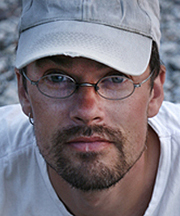
Olga Kourtchenko
Principle Research Engineer with a Ph.D. in plant molecular biology, working in marine research field since 2013, studying various aspects of diatom biology, physiology, genetics and evolution using Skeletonema marinoi as a model species. Currently involved in projects dealing with S. marinoi resting stages metabolism, sexual reproduction mechanisms, genomic signatures of evolutionary adaptation to environmental changes (eutrophication, temperature, heavy-metal pollution), and developing S. marinoi as a model and a tool for functional genomics. I provide support at all stages of the projects, from the experimental setup to data analysis and publication. Additional responsibilities include management and maintenance of a collection of micro algal species at Gothenburg University (GUMACC) and a S. marinoi natural strains collection.
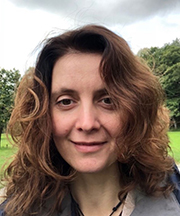
Elizabeth Robertson
Principal Research Engineer with a Ph.D. in sediment biogeochemistry focusing on anaerobic Nitrogen cycling processes. Currently involved with several projects using stable isotopes (15N, 13C) investigating the environmental turnover and fate of nutrients and carbon. In the Töpel group I am involved with a project investigating anaerobic N and C uptake in resting stages of Skeletonema marinoi where I am responsible for lab-based experimental design and isotope and nutrient analyses.
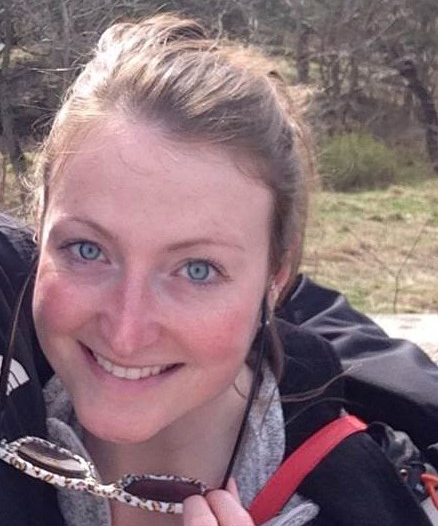
André Soares
Postdoctoral Researcher (Carl Tryggers Foundation) investigating the genomic signatures of environmental stressors in marine diatoms. Namely, I’m interested in ‘loss-of-function’ deleterious mutations possibly derived from a panoply of structural variants acquired from changes in e.g. water temperature. For this, genomes of revived diatom resting stages have been recovered from temporally-resolved sediment cores and massively sequenced using Illumina© technology. I obtained my PhD from Aberystwyth University (Wales, UK), where I researched microbial communities across the terrestrial subsurface, particularly those inhabiting coalfield aquifers in south Wales. Briefly, with the use of 16S rRNA gene sequencing and shotgun metagenomics, I was able to identify bacterial and archaeal taxa key to Fe and S biogeochemistry in the region. For my Bsc. and Msc. at the University of Algarve (Portugal) I investigated microbial communities in karstic caves and marine sponges.
andre.soares@bioenv.gu.se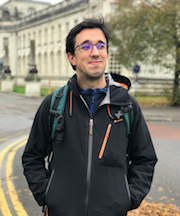
Björn Andersson
In my Ph.D. research, I study evolution of heavy metal tolerance in Baltic sea diatoms. I mainly use resting stages of the dominant diatom species Skeletonema marinoi to investigate how natural populations, at varying degree of exposure to metals, have developed tolerance. The resting stages can be preserved, alive, in the sediments for hundreds of years which also enables tracking of how populations have evolved over 1000’s of generations. In my work I mainly use laboratory experiments which I coupled with whole genome re-sequencing to link genetic differences to metal tolerant amongst individuals. This will enable identifications of genes, and physiological mechanisms, that are susceptible to be tinkered with by evolution under high metal exposure.
Non-scientific Interests: Beer brewing, gardening, fishing, soccer, outdoor activities with my 1, 4 and 6 year old daughters.
bjorn.andersson@marine.gu.se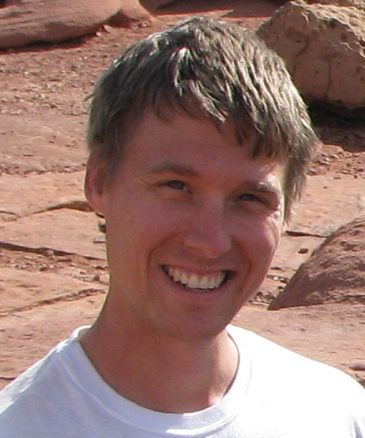
Matthew Pinder
PhD Student in the project Survivors of the Sea, with a background in bioinformatics and genomics. For the past three years I have worked primarily with genomic data from the diatom Skeletonema marinoi and its microbiome, including genome assembly and annotation of the bacteria in this holobiont. More recently I have been working on pipelines for the automation of bioinformatic analyses.
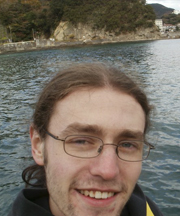
Doris Björling
Fourth year biology student partial to the sea and the organisms that dwell in it, currently working on my bachelor’s project. The rapidly developing genetics and bioinformatic tools for investigating the evolution, distributions and interactions of above-mentioned critters appeal to me. Using a high precision sample inference pipeline I’m investigating variation in microbiome composition of the brown algae Fucus vesiculosus along a salinity gradient.
Currently studying for a master's degree in marine biology
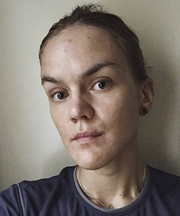
Vilma Canfjorden
I have a background in molecular biology, systems biology and I have years of experience selling tomato plants as a part-time job. I have always been interested in computers and science, which made bioinformatics a perfect subject for my masters thesies. In this project I have been developing a bioinformatics pipeline in Python focusing on population genomics.
Currently working at Clinical Genomics Göteborg
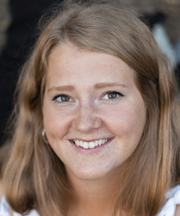
Sorry, there are no funded positions available at this time.
If you would like to do a MSc or BSc project in the group, please contact me at mats.topel@marine.gu.se
Zrimec J, Buric F, Muhammad AS, Chen R, Verendel V, Töpel M, Zelezniak A (2020) Gene expression is encoded in all parts of a co-evolving interacting gene regulatory structure. Nature communications 11:6141
Schneider JV, Jungcurt T, Cardoso D, Amorim AM, Töpel M, Andermann T, Poncy O, Berberich T, Zizka G (2020) Phylogenomics of the tropical plant family Ochnaceae using targeted enrichment of nuclear genes and 250+ taxa DOI: 10.1002/tax.12421
Leder EH, André C, Le Moan A, Töpel M, Blomberg A, Havenhand JN, Lindström K, Volckaert FAM, Kvarnemo C, Johannesson K, Svensson O (2020) Post‐glacial establishment of locally adapted fish populations over a steep salinity gradient J Evol Biol. 2020; 00: 1– 19
Kinnby A, Jonsson PR, Ortega-Martinez O, Töpel M, Pavia H, Pereyra RT, Johannesson K (2020) Combining an Ecological Experiment and a Genome Scan Show Idiosyncratic Responses to Salinity Stress in Local Populations of a Seaweed Front. Mar. Sci., 19 June 2020
Adrian-Kalchhauser I, Blomberg A, Larsson T, Musilova Z, Peart CR, Pippel M, Solbakken MH, Suurväli J, Walser J-C, Wilson JY, Rosenblad MA, Burguera D, Gutnik S, Michiels N, Töpel M, Pankov K, Schloissnig S, Winkler S (2020) The round goby genome provides insights into mechanisms that may facilitate biological invasions BMC Biology volume 18, Article number: 11
Lethin J, Shakil SMS, Hassan S, Sirijovski N, Töpel T, Olsson O, Aronsson A (2020) Development and characterization of an EMS-mutagenized wheat population and identification of salt-tolerant wheat lines. BMC Plant Biology volume 20, Article number: 18
Ling Q, Broad W, Trösch R, Töpel M, Sert TD, Lymperopoulos P, Baldwin A, Jarvis P (2019) Ubiquitin-dependent chloroplast-associated protein degradation in plants. Science 363(6429):eaav4467. doi:10.1126/science.aav4467
Zrimec J, Buric F, Muhammad AS, Chen R, Verendel V, Töpel M, Zelezniak A (2019) Gene expression is encoded in all parts of a co-evolving interacting gene regulatory structure. BioRxiv. doi:10.1101/792531
Johansson ON, Töpel M, Egardt J, Pinder MIM, Andersson MX, Godhe A, Clarke AK (2019) Phenomics reveals a novel putative chloroplast fatty acid transporter in the marine diatom Skeletonema marinoi involved in temperature acclimation. Scientific Reports 9(1):15143. doi:10.1038/s41598-019-51683-y
Töpel M, Pinder MIM, Johansson ON, Kourtchenko O, Godhe A, Clarke AK (2019) Whole Genome Sequence of Marinobacter salarius Strain SMR5, Shown to Promote Growth in its Diatom Host. Journal of Genomics 7:60-63. doi:10.7150/jgen.39039
Töpel M, Pinder MIM, Johansson ON, Kourtchenko O, Godhe A, Clarke AK (2019) Complete Genome Sequence of the Diatom-Associated Bacterium Sphingorhabdus sp. Strain SMR4y. Microbiology Resource Announcements 8(29):e00482-19. doi:10.1128/MRA.00482-19
Ferrante MI, Entrambasaguas L, Johansson M, Töpel M, Kremp A, Montresor M, Godhe A (2019) Exploring Molecular Signs of Sex in the Marine Diatom Skeletonema marinoi. Genes 10(7):494. doi:10.3390/genes10070494
Adrian-Kalchhauser I, Blomberg A, Larsson T, Musilova Z, Peart CR, Pippel M, Solbakken MH, Suurväli J, Walser J-C, Wilson JY, Rosenblad MA, Burguera D, Gutnik S, Michiels N, Töpel M, Pankov K, Schloissnig S, Winkler S (2019) Evolved for success in novel environments: The round goby genome. BioRxiv 708974. doi:10.1101/708974
Johansson ON, Pinder MIM, Ohlsson F, Egardt J, Töpel M, Clarke AK (2019) Friends with Benefits: Exploring the Phycosphere of the Marine Diatom Skeletonema marinoi. Frontiers in Microbiology 10:1828. doi:10.3389/fmicb.2019.01828
Förlin L, Asker N, Töpel M, Österlund T, Kristiansson E, Parkkonen J, Haglund P, Faxneld S, Sturve J (2019) mRNA expression and biomarker responses in perch at a biomonitoring site in the Baltic Sea – possible influence of natural brominated chemicals. Frontiers in Marine Science 6:316. doi:10.3389/fmars.2019.00316
Pinder MIM, Johansson ON, Almstedt A, Kourtchenko O, Clarke AK, Godhe A, Töpel M (2019) Genome Sequence of Kordia sp. Strain SMS9 Identified in a Non-Axenic Culture of the Diatom Skeletonema marinoi. Journal of Genomics 7:46. doi:10.7150/jgen.35061
Johansson ON, Töpel M, Pinder MIM, Kourtchenko O, Blomberg A, Godhe A, Clarke AK (2019) Skeletonema marinoi as a new genetic model for marine chain-forming diatoms. Scientific Reports 9:5391. doi:10.1038/s41598-019-41085-5
Töpel M, Pinder MIM, Johansson ON, Kourtchenko O, Godhe A, Clarke AK (2019) Genome Sequence of Arenibacter algicola Strain SMS7, Found in Association with the Marine Diatom Skeletonema marinoi. Microbiology Resource Announcements 8(2):e01461-18. doi:10.1128/MRA.01461-18
Töpel M, Pinder MIM, Johansson ON, Kourtchenko O, Clarke AK, Godhe A (2019) Complete Genome Sequence of Novel Sulfitobacter pseudonitzschiae Strain SMR1, Isolated from a Culture of the Marine Diatom Skeletonema marinoi. Journal of Genomics 7:7-10. doi:10.7150/jgen.30559
Töpel M, Pinder MIM, Johansson ON, Kourtchenko O, Godhe A, Clarke AK (2018) Whole-Genome Sequence of the Novel Antarctobacter heliothermus Strain SMS3, Found in Association with the Marine Diatom Skeletonema marinoi. Journal of Genomics 6:113-116. doi:10.7150/jgen.27637.
Töpel M, Pinder MIM, Johansson ON, Kourtchenko O, Godhe A, Clarke AK (2018) Complete Genome Sequence of Loktanella vestfoldensis Strain SMR4r, a Novel Strain Isolated from a Culture of the Chain-Forming Diatom Skeletonema marinoi. Genome Announcements 6(12):e01558-17. doi:10.1128/genomeA.01558-17
Andermann T, Fernandes AM, Olsson U, Töpel M, Pfeil B, Oxelman B, Aleixo A, Faircloth B, Antonelli A (2018) Allele Phasing Greatly Improves the Phylogenetic Utility of Ultraconserved Elements. Systematic Biology 68(1):32–46. doi:10.1093/sysbio/syy039
Bédard B, Trösch R, Wu F, Ling Q, Flores-Pérez Ú, Töpel M, Nawaz F, Jarvis P (2017) Suppressors of the Chloroplast Protein Import Mutant tic40 Reveal a Genetic Link between Protein Import and Thylakoid Biogenesis. Plant Cell 29(7):1726-1747. doi: 10.1105/tpc.16.00962
Töpel M, Pinder MIM, Johansson NO, Kourtchenko O, Godhe A, Clarke AK (2017) Genome Sequence of Roseovarius mucosus Strain SMR3, Isolated from a Culture of the Diatom Skeletonema marinoi. Genome Announcements 5(22):e00394-17. doi:10.1128/genomeA.00394-17
Godhe A, Gross S, Tesson SVM, Kourtchenko O, De Wit P, Rajala T, Andersson B, Ricaud FLF, Axelson-Fisk M, Nilsson S, Ellegaard M, Andersen TJ, Nordberg K, Blomberg A, Johannesson K, Töpel M (2017) Exploring human-induced evolution using genomics of revived diatoms from natural archives. Phycologia 56(sup4):64-65. doi:10.2216/0031-8884-56.sp4.1
Töpel M, Zizka A, Calió MF, Scharn R, Silvestro D, Antonelli A (2017) SpeciesGeoCoder: Fast Categorization of Species Occurrences for Analyses of Biodiversity, Biogeography, Ecology, and Evolution. Systematic Biology 66(2):145-151. doi:10.1093/sysbio/syw064
Antonelli A, Hettling H, Condamine FL, Vos K, Nilsson RH, Sanderson M, Sauquet H, Scharn R, Silvestro D, Töpel M, Bacon CD, Oxelman B, Vos RA (2017) Toward a Self-Updating Platform for Estimating Rates of Speciation and Migration, Ages, and Relationships of Taxa (SUPERSMART). Systematic Biology 66(2):152-166. doi:10.1093/sysbio/syw066
Olsen JL, Rouzé P, Verhelst B, Lin Y-C, Bayer T, Collen J, Dattolo E, De Paoli E, Dittami S, Maumus F, Michel G, Kersting A, Lauritano C, Lohaus R, Töpel M, Tonon T, Vanneste K, Amirebrahimi M, Brakel J, Boström C, Chovatia M, Grimwood J, Jenkins JW, Jueterbock A, Mraz A, Stam WT, Tice H, Bornberg-Bauer E, Green PJ, Pearson GA, Procaccini G, Duarte CM, Schmutz J, Reusch TBH, de Peer Y (2016) The genome of the seagrass Zostera marina reveals angiosperm adaptation to the sea. Nature 530:331–335. doi:10.1038/nature16548
Abarenkov K, Adams RI, Laszlo I, Agan A, Ambrosio E, Antonelli A, Bahram M, Bengtsson-Palme J, Bok G, Cangren P, Coimbra V, Coleine C, Gustafsson C, He J, Hofmann T, Kristiansson E, Larsson E, Larsson T, Liu Y, Martinsson S, Meyer W, Panova M, Pombubpa N, Ritter C, Ryberg M, Svantesson S, Scharn R, Svensson O, Töpel M, Unterseher M, Visagie C, Wurzbacher C, Taylor AFS, Kõljalg U, Schriml L, Nilsson RH (2016) Annotating public fungal ITS sequences from the built environment according to the MIxS-Built Environment standard – a report from a May 23-24, 2016 workshop (Gothenburg, Sweden). MycoKeys 16:1-15. doi:10.3897/mycokeys.16.10000
Nilsson AK, Johansson ON, Fahlberg P, Kommuri M, Töpel M, Bodin LJ, Sikora P, Modarres M, Ekengren S, Nguyen CT, Farmer EE, Olsson O, Ellerström M, Andersson MX (2015) Acylated monogalactosyl diacylglycerol: prevalence in the plant kingdom and identification of an enzyme catalyzing galactolipid head group acylation in Arabidopsis thaliana. The Plant Journal 84:1152-1166. doi:10.1111/tpj.13072
Trösch R, Töpel M, Flores-Pérez Ú, Jarvis P (2015) Genetic and Physical Interaction Studies Reveal Functional Similarities between ALBINO3 and ALBINO4 in Arabidopsis. Plant Physiology 169(2):1292-1306. doi:10.1104/pp.15.00376
Eriksson T, Lundberg M, Töpel M, Östensson P, Smedmark JEE (2015) Sibbaldia: a molecular phylogenetic study of a remarkably polyphyletic genus in Rosaceae. Plant Systematics and Evolution 301(1):171-184. doi:10.1007/s00606-014-1063-3
Kasmati AR, Töpel M, Khan NZ, Patel R, Ling Q, Karim S, Aronsson H, Jarvis P (2013) Evolutionary, molecular and genetic analyses of Tic22 homologues in Arabidopsis thaliana chloroplasts. PLOS One 8(5):e63863. doi:10.1371/journal.pone.0063863
Töpel M, Antonelli A, Yesson C, Eriksen B (2012) Past Climate Change and Plant Evolution in western North America: A Case Study in Rosaceae. PLOS One 7(12):e50358. doi:10.1371/journal.pone.0050358
Bertrand Y, Töpel M, Elväng A, Melik W, Johansson M (2012) First Dating of a Recombination Event in Mammalian Tick-borne Flaviviruses. PLOS One 7(2):e31981. doi:10.1371/journal.pone.0031981
Töpel M, Ling Q, Jarvis, P (2012) Neofunctionalization within the Omp85 protein superfamily during chloroplast evolution. Plant Signaling & Behavior 7(2):161-164. doi:10.4161/psb.18677
Töpel M, Lundberg M, Eriksson T, Eriksen B (2011) Molecular data and ploidal levels indicate several putative allopolyploidization events in the genus Potentilla (Rosaceae). PLoS Currents: Tree of Life 3:RRN1237. doi:10.1371/currents.RRN1237
Töpel M, Jarvis P (2011) The Tic20 gene family: phylogenetic analysis and evolutionary considerations. Plant Signaling & Behavior 6(7):1046-1048. doi:10.4161/psb.6.7.15631
Kasmati AR, Töpel M, Patel R, Murtaza G, Jarvis P (2011) Molecular and genetic analyses of Tic20 homologues in Arabidopsis thaliana chloroplasts. The Plant Journal 66(5):877-889. doi:10.1111/j.1365-313X.2011.04551.x
Lundberg M, Töpel M, Eriksen B, Nylander JA, Eriksson T (2009) Allopolyploidy in Fragariinae (Rosaceae): comparing four DNA sequence regions, with comments on classification. Molecular Phylogenetics and Evolution 51(2):269-280. doi:10.1016/j.ympev.2009.02.020
Ryberg M, Nilsson RH, Kristiansson E, Töpel M, Jacobsson S, Larsson E (2008) Mining metadata from unidentified ITS sequences in GenBank: a case study in Inocybe (Basidiomycota). BMC Evolutionary Biology 8:50. doi:10.1186/1471-2148-8-50
Aronsson H, Boij P, Patel R, Wardle A, Töpel M. and Jarvis P (2007) Toc64/OEP64 is not essential for the efficient import of proteins into chloroplasts in Arabidopsis thaliana. The Plant Journal 52(1):53-68. doi:10.1111/j.1365-313X.2007.03207.x
Eriksen B, Töpel M (2006) Molecular phylogeography and hybridization in members of the circumpolar Potentilla sect. Niveae (Rosaceae). American Journal of Botany 93(3):460-469. doi:10.3732/ajb.93.3.460